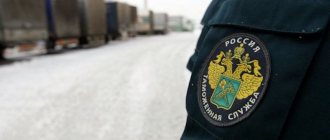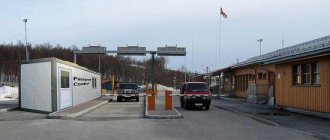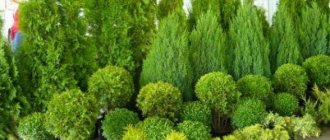According to the Decree of the Government of the Russian Federation of December 14, 2021 No. 2097, a tariff quota was introduced in relation to grain crops when exported from the Russian Federation to states that are not members of the Eurasian Economic Union (hereinafter referred to as the EAEU).
A tariff quota for the export of grain crops was introduced for the period from February 15 to June 30, 2021 (inclusive).
For the period of validity of the quota, changes have been made to the rates of export customs duties on grain crops.
When a license is granted to the customs authority to export these goods within the allocated quota, a reduced customs duty rate is applied.
If there is no license or the allocated quota is exceeded, an increased customs duty rate is applied in accordance with Decree of the Government of the Russian Federation of December 14, 2021 No. 2096.
The issuance of licenses for the import and export of goods is provided for by the Treaty on the Eurasian Economic Union.
In the Russian Federation, the authorized body responsible for issuing licenses for the import and export of goods is the Ministry of Industry and Trade of the Russian Federation (Minpromtorg of Russia). Therefore, such a license is often called the “Ministry of Industry and Trade License”.
Three ways to obtain a tariff quota for timber exports:
- Export timber at a rate of 80% and receive a free allocated volume of quotas next year
- Negotiate with a company that has quotas and enter into a supply contract on its behalf
- Buy a company that has quotas for timber exports and, having become the owner of the company, use the quotas, as well as receive a free distribution of quotas for the next year.
Currently, the Ministry of Industry and Trade has already distributed quotas for 2014 and 2015.
Green light for illegal loggers
According to the document, the project of the Ministry of Industry and Trade cancels all previously adopted regulatory acts of the department, Andrey Nagibin .
“We already understand that the “black” and “gray” business of lumberjacks is coming to an end. But this document makes it possible, just before the New Year, to extend the lease of forest plots: not to auction them off again, but simply to extend the right to cut down trees for several decades. There are companies in the regions that are now lobbying for the extension of forest leases to 49 years,” the expert believes.
The draft resolution not only provides for the allocation of a logging quota, but also allows the export of 7 million cubic meters of unprocessed, so-called roundwood. Pine, spruce, and Daurian larch will be cut down in the Far Eastern taiga. The draft document states that two-thirds of the declared quota will go to the Asian market.
According to Nagibin, the Ministry of Industry and Trade could have more accurately indicated the address of the final recipient: this is our eastern neighbor China.
“In fact, this draft resolution creates a loophole from January 1 so that part of the unprocessed timber - 7 million cubic meters - can be exported abroad, primarily to China,” says an expert at the ONF Center for Public Monitoring on environmental issues and forest protection.
Loggers in Siberia and the Far East have long calculated the economic benefits for their business. Igor Shkradyuk, coordinator of the industrial greening program at the Center for Wildlife Conservation .
“Payments for natural resources, which also include forests, are very low in Russia. Therefore, if you export minimally processed wood, you incur minimal costs. But if you start making furniture from round timber, or even simple boxes, you need to invest additional funds and incur serious costs, which becomes not very profitable for the business,” argues Igor Shkradyuk.
pxhere.com/
What else is required to export under a tariff quota if there is a quota?
In addition to the quota for the export of timber, a license from the Ministry of Industry and Trade for the export of timber must be issued in advance, that is, before submitting the customs declaration. The original license from the Ministry of Industry and Trade is provided to customs. The license is issued for a period of 1 year. Thus, after a year it must be re-registered.
Unlike a license, quotas are distributed automatically by the government based on export statistics for the previous year.
News
From July 1, 2021, customs duties will be introduced on the export of lumber (not sanded and/or planed) with a moisture content of more than 22%. The measures being introduced will limit the illegal export of unprocessed and rough-timbered wood under the guise of lumber.
From July 1 to December 31, 2021, export customs duty rates change as follows:
10%, but not less than 13 euros per 1 m3 (previously no duty was charged) for coniferous timber with a moisture content of more than 22%;
10%, but not less than 15 euros per 1 m3 (previously no duty was charged) in relation to oak timber with a moisture content of more than 22%;.
10%, but not less than 50 euros per 1 m3 in relation to beech timber (previously 10%, but not less than 10 euros per 1 m3) and ash (previously 10%, but not less than 12 euros per 1 m3) with a moisture content of more than 22% .
Over two and a half years, about 20.5 million m3 of exported timber worth $2 billion were declared to customs authorities located in the Far East. At the same time, 96% of the physical volume of timber exports comes from China.
As part of the decriminalization of the timber industry complex, the customs of the Far Eastern region, from 2021 to the present, have initiated 207 criminal cases regarding the illegal movement of 577 thousand m3 of timber worth more than 5.5 billion rubles, the identified amount of unreturned foreign currency earnings amounted to 700 million rubles, and legalized cash - in the amount of 26 million rubles.
In order to destroy the economic basis of criminal groups and compensate for the damage caused, in cooperation with other law enforcement agencies, over 18 thousand m3 of timber with a total value of more than 100 million rubles were seized, measures were taken to seize the property of suspects and accused, 7 criminal cases were initiated on facts of legalization of criminal income, 5 of which in relation to organized groups.
As a result of the joint work of the Far Eastern operational customs and other law enforcement agencies, signs of the organization and participation of individuals in criminal communities specializing in timber smuggling were identified, which allowed the investigative authorities to initiate 9 criminal cases, two of which have already resulted in convictions.
In addition, the customs of the Far East opened 4 thousand cases of administrative offenses, of which 73% were for non-declaration, false declaration, as well as violation of prohibitions and restrictions on the export of timber. The offenders paid fines in the amount of 64 million rubles, and timber worth 27.5 million rubles was confiscated.
What else should you pay attention to when preparing for the export of timber?
In accordance with Government Decree No. 779 of July 30, 2012, an export license (Ministry of Industry and Trade license) can only be issued to bona fide participants in foreign trade activities, namely:
- or tenants of forest plots who do not have arrears in rent payments,
- or forest buyers who have entered into a purchase and sale agreement with bona fide tenants.
It is important that the exporter has direct lease agreements for logging or direct agreements with tenants of logging sites!
It is very easy to obtain a License with us:
Send us the name of the product, HS code
We will analyze the information and make sure that: - the exported goods really require a License, - the documents you have allow you to issue a License.
We will draw up the documents necessary to obtain a License from the Ministry of Industry and Trade
We will send you the required set of documents for signature.
Our specialists will submit documents to the Ministry of Industry and Trade
We control the process, contact the contractor on all questions that arise, and give our answers regarding the submitted documents and the goods themselves.
We will receive the original License and give it to you
Ban or restriction?
“It is very difficult to make forecasts in this situation. Most often, such innovations require improvement. At the same time, it is necessary to properly build a feedback mechanism between officials and representatives of the forestry business community in order to avoid negative consequences in the future,” said Alexander Aleksin, head of the Group’s lumber sales service, during the WoodIT conference.
“The worst option is a total ban on the export of round timber. Despite the fact that the president announced a ban on the export of coniferous and valuable deciduous timber, unprocessed and roughly processed, a proposal immediately appeared to leave only two checkpoints for export products: Lute on the border with Finland and Hasan on the border with North Korea. In fact, such a decision means a complete ban on the export of any round timber.
For northwestern Russia, at the first stage, this immediately affects the export of approximately 4 million cubic meters of birch pulpwood, which does not have its consumption in the domestic market. And since we have mixed production forests, and birch actively grows in them, such a ban means for loggers leaving deciduous plots.
We already went through this in 2008-2010. Then only for our company this resulted in a reduction in production volumes by approximately 25% with all the ensuing consequences. Coming out of the deciduous cutting areas, along the way we lost part of the coniferous sawlogs.
If such measures are taken today, then, according to our estimates, approximately 1.3 million cubic meters of coniferous lumber will disappear from the northwestern Russian market. Accordingly, this will aggravate the existing shortage of raw materials for timber processing enterprises. And in the second round of development of the situation according to this scenario, we will get a total absence of birch veneer logs on the market.
I’ll explain why: if coniferous sawlogs occupy 60-70% of the trunk and, accordingly, can pull pulpwood with it, then birch fan logs make up about 10%, maximum 15% of the trunk. And he is simply not able to bear 80-85% of the cost of logging. Thus, the situation that already existed in 2008-2010 may repeat itself,” Alexander Aleksin suggests this development of events.
Not everyone will pass
WhatWood experts are more optimistic in their forecasts, although they admit that not all players will have the same transition conditions; some will have to resolve rather complex organizational issues.
“I think that in 2022 Russian manufacturers will work within the current market conditions. And the loggers, if they do not have exports, most likely, will simply not enter the plots to harvest coniferous timber. But there is also a point that concerns those logging enterprises that have their own processing facilities and themselves produce lumber from part of the harvested raw materials - as a rule, this is low-quality lumber. These companies have a question: what to do with such sawlogs? And we will have to seriously think about it,” said the WhatWood consultant.
Marina Zotova also expressed the opinion that the ban on the export of round timber is unlikely to lead to a strengthening of the position of large players and the exit of small companies from the market. Although in different regions the situation may develop differently.
“For example, in the Tver region there are practically no drying facilities. And a lot of medium and small businesses harvest or buy round timber to cut it and sell it. They work mainly in the domestic market, but also carry out export sales. Most likely, there will also be some changes for such companies, their profitability will become lower,” the speaker suggested.
Who and when should report on the new form to EGAIS Forest
Entering information into EGAIS Forest is carried out by legal entities and individual entrepreneurs who own households. management or operational management of timber processing facilities. A new document is generated to take into account the balance of wood.
The form is created within one business day when wood and lumber are purchased or sold at the warehouse:
- after the actual receipt of the products, when the electronic accompanying documents expire;
- after the actual removal of wood, when an accompanying document is created in the EGAIS Forest system, which indicates the warehouse.
Next, a final report is generated, which contains information about the timber inventory balance. Submission of final information does not require the participation of a responsible person; reporting is generated automatically every month in the EGAIS Forest system.
If the received documents contain discrepancies in the types and volumes of wood, the system will block them until the discrepancies are resolved. Creating new forms will no longer be possible. As a result, the owner of a timber processing facility will not be able to enter into transactions for the purchase or sale of wood and lumber.
How prices for wood raw materials will change
Another important question is how will the ban on the export of round timber affect pricing policy? There are fears that as a result, the volume of wood harvesting will decrease, and this threatens an uncontrollable increase in prices for raw materials. Already in the first quarter of 2021, prices for round timber increased by 20-40% compared to the same period in 2020.
The greatest increase was shown by birch veneer logs (+40%) and spruce sawlogs (+30%). Marina Zotova presented such data at the “Forest and Lumber Market” conference organized by MaxConference. In her report, she said that rising prices for round timber from the third quarter of 2021 began to spur strong demand for these products and local shortages of raw materials.
As part of WoodIT, Indufor Group specialists examined this problem at three levels: federal, regional and local.
“Firstly, it is necessary to understand that the situation in the European part of Russia differs from the situation in the east of the country: large production capacities are concentrated here, which means that dependence on exports is decreasing. The market for round timber is generally formed; there is a competitive environment for almost all types of these products. While in the eastern part of Russia the market is focused primarily on sawn wood and is very dependent on export volumes.
Next is the regional level: territories located on the border of the Russian Federation may turn out to be a little more sensitive to the export ban in terms of changes in prices for round timber than “continental” ones. And finally, the local level is the regions that carry out their activities “behind the barb,” as it is commonly called.
Now we are receiving a lot of feedback and we see that such enterprises are very actively searching for new local markets - as a rule, these are nearby sawmills. Or they purchase small sawmill lines of their own, but this is a short-term solution to the problem. In the long term, we at Indufor Group see these enterprises as a possible part of the strategy for consolidating our main forest users in Russia,” said the agency’s senior consultant Sergei Senko.
Mikhail Dmitriev, CEO of ProDerevo and moderator of WoodIT, recalled the situation in 2008, when protective duties on the export of round timber did not encourage the development of processing in the domestic market. According to him, “everyone just sat on their suitcases with money and began to wait for the ban to be lifted.”
“Yet dependence on exports was much higher then than it is now. Again, the situation may vary from region to region. In the European part of Russia, significant sawmill production is still planned, including small ones, which are not reflected in statistics. This is what I already mentioned: many logging enterprises, which until now have been export-oriented, are now looking for small forest processing lines to acquire or absorb. In general, this leads to their self-sufficiency,” says a representative of the Indufor Group.
For reference , not only Russia is moving towards tightening conditions for the export of timber. This trend exists in other large countries: the USA, Canada, New Zealand, Poland, Germany. In particular, Canada has had high duties on the export of round timber for many years. And in September 2021, the country revised the characteristics of export lumber, establishing a minimum cross-section for logs. As a result, exporters lost the opportunity to export raw timber in the form of square logs at low duties.







